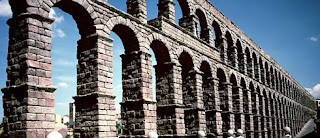Best of Spain

The Alhambra, Granada:
The Alhambra (literally "the red") is a true expression of the once flourishing Moorish civilization and is the finest example of its architecture in Spain. The Alhambra is an ancient palace and fortress complex of the Moorish monarchs of Granada, in southern Spain It was the residence of the Muslim kings of Granada and their court, but is currently a museum exhibiting exquisite Islamic architecture.
Modernisme, Barcelona:
At the end of XIX century, Barcelona was quaked by anarchism together with catalan nationalism. The catalan modernism movement aimed to gather every artistic skill and wanted to get out of the steady and leisurely historicism like other european Art Nouveau movements. It starts from the 1880 wiyh the painter Ramon Casas and the theoriser Cirici Pellicer.
Some of Spain’s more famous Architects are: Gaudi, Domenech i Montaner, Jujol, Puig y Cadafalch. The sculptural forms of Barcelona's modernista architects - most famously Gaudí – define the city's exuberant architectural heritage. Barcelone gathers more than 150 modernist buildings including the Sagrada Familia.
A night on the tiles, Madrid:
The traditional way to end a night of bar hopping and clubbing in Spain is to have a chocolate con churros (thick hot chocolate with deep-fried hoops of batter). Just what you need after a night on the tiles!
The Mezquita, Córdoba:
The Mezquita (Spanish for "mosque), is a Roman Catholic cathedral in Córdoba, Spain that was at one time the second largest mosque in the world. The Moslem emir Abderrahman I ordered construction of the temple in the year 785 on the ruins of the old Visigoth church of St. Vincent.
Cordoba's Mosque has a mixture of different architectural styles, that have occurred over the past nine centuries. Today the Mezquita as it is known can be visited throughout the year for 6 Euro entrance fee. The approach is via the Patio de los Naranjos, a classic Islamic ablutions courtyard which preserves both its orange trees and fountains.
Wine:
Spain's formidable variety of quality wines remain little known outside the country. The wines of Spain can be divided into several regions, each one very different from the rest. Better known are the quality reds from Rioja and Ribera del Duero, reds and whites from Penedés, fine whites from Rueda, "sherries" from Jerez, and a fine sparkling wine known as cava. Spain produces about 11 varieties that range from the generous dry wines, through to the sparkling wines, the rose and the valuable gran reservas. There is a Spanish wine for every occasion and every type of meal.
Aqueduct, Segovia
The Aqueduct of Segovia is one of the most significant and best-preserved monuments left by the Romans on the Iberian Peninsula.The Roman aqueduct of Segovia, probably built c. A.D. 50, is remarkably well preserved. These feats elevates this construction as a masterpiece of engineering of which 20,400 stone blocks are not united by mortar nor concrete.
The Roman aqueduct bridge of Segovia is about 2950 feet long although the section where the arches are divided in two levels is about 900 feet. The workings of the Segovia Aqueduct extend for 14 kilometers under an urban complex that was declared a UNESCO World Heritage Site in 1985.
Next page:
» Best of Spain






1 comment:
Your posts make my heart beat faster.
Post a Comment